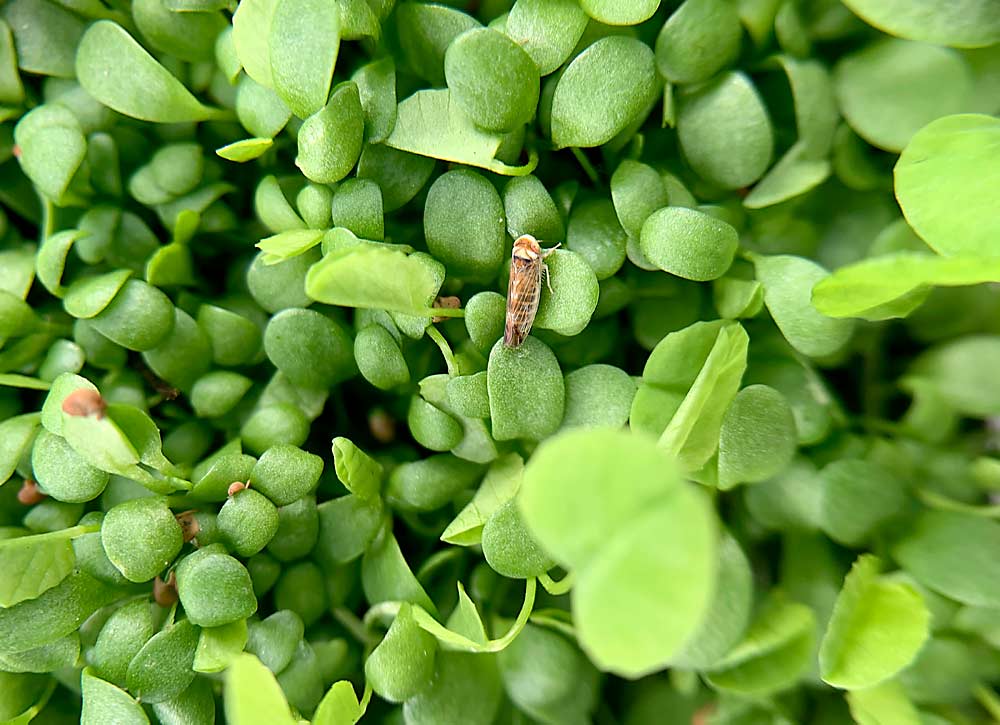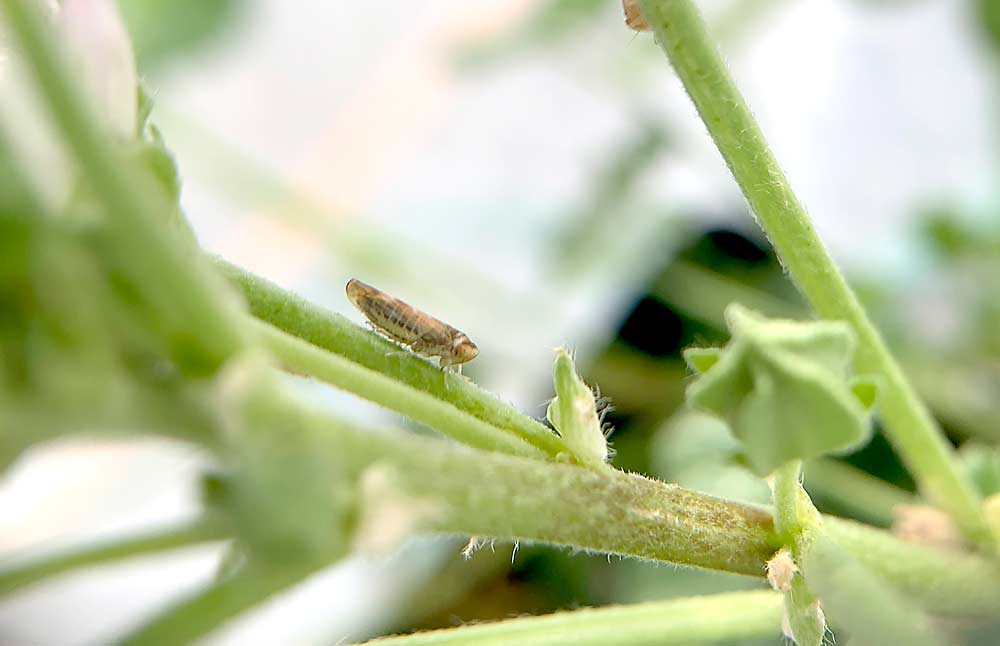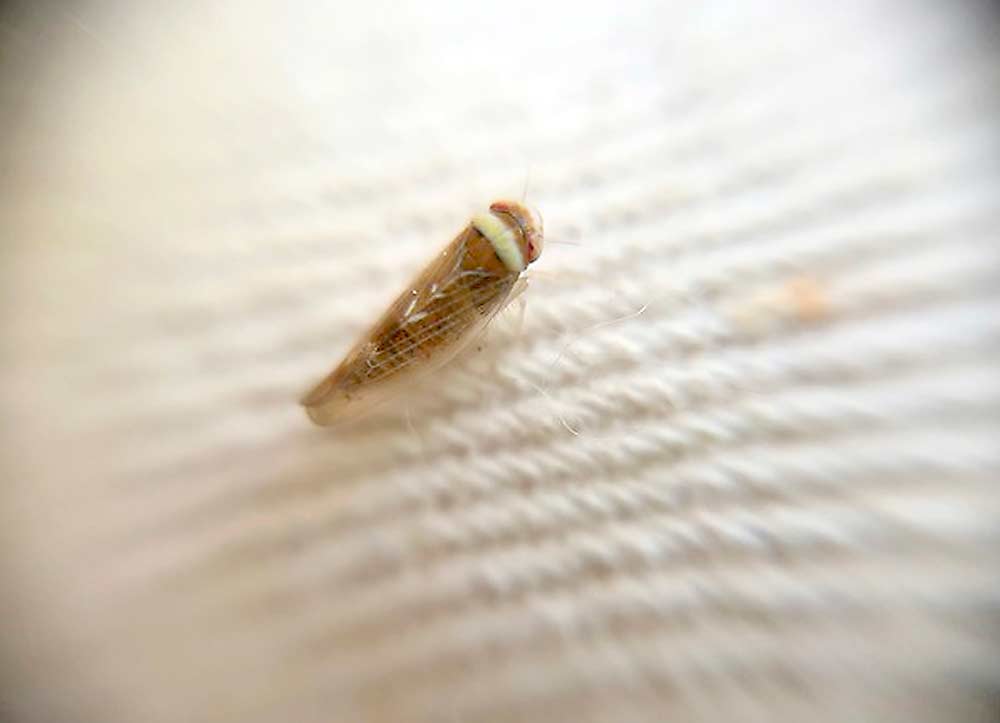
No one had ever paid much attention to Colladonus reductus and Colladonus geminatus, the two leafhoppers now believed to be the primary vectors of the X disease phytoplasma in Washington and Oregon orchards.
“These leafhoppers don’t even have common names, because if you don’t have X disease, there’s no reason to care about them,” said Washington State University entomologist Tobin Northfield. But as the Northwest cherry industry battles epidemic levels of X disease, one of the causes of little cherry disease, the under-the-radar insects have become enemy No. 1.
Northfield leads two new research projects aimed at understanding how the vectors spread the disease and how deterrents could reduce their activity in orchards, funded by the Washington Tree Fruit Research Commission and the Oregon Sweet Cherry Commission.
Almost all of the funding from those commissions for new research projects in 2020, more than $450,000, will go toward tackling little cherry disease. Other newly funded projects include testing insecticides against the leafhoppers, evaluating the sensitivity of rootstocks to X disease, and studying how the X phytoplasma and little cherry viruses cause symptoms that make fruit unmarketable.
Researchers seek to leverage that funding, and their preliminary findings, into larger grants from state and federal sources, said research commission Executive Director Ines Hanrahan. Meanwhile, the tree fruit endowment will fund a full-time, two-year extension position to work on little cherry disease outreach, expected to start later this spring.
On the applied research front, extension specialists Tianna DuPont and Ashley Thompson plan to test different tree removal strategies and assess the effectiveness of more versus less aggressive management strategies.

Leafhoppers
Northfield and fellow WSU entomologist Louis Nottingham divided the question of how best to control leafhoppers into two research projects: insecticides and deterrents. The insecticide project will evaluate conventional and organic products against adult leafhoppers, looking at both mortality and feeding suppression, Nottingham said. Then, he plans to evaluate the residual efficacy of the most promising products.
He’s also interested in whether leafhoppers infected with the X phytoplasma are more susceptible to insecticides — as has been shown in other vectors. Research from Washington’s last X disease outbreak in the 1950s showed that the phytoplasma reduces their longevity and fecundity, Nottingham said.
But first, they need leafhoppers. “Our challenge right now is making sure we can have these lab colonies and we can rear them in an efficient manner, because this is going to take a lot of insects,” he said.
While that work will take place in the lab, commercial orchards in both the Wenatchee and Yakima area will host deterrent trials after harvest.
“Because leafhoppers aren’t specialized on stone fruit, we can convince them to eat something else. That’s why this deterrent could be really effective,” Northfield said. Inspired by Nottingham’s work that shows promise in deterring pear psylla, they will test the use of kaolin clay and reflective mulch, in addition to growers’ insecticide regimes.
Research from California vineyards shows promise with kaolin clay for managing glassy-winged sharpshooters — a leafhopper that vectors another phytoplasma, Pierce’s disease — Northfield said.
As for the reflective mulch, it disorients the insects so that they don’t know which way is up. They don’t like that, so they go elsewhere. That’s the goal at least. The reflective mulch also covers the groundcover leafhoppers frequently inhabit, further limiting their route into the trees, he said.
A separate research project will tackle the questions of where else leafhoppers go and which plant hosts harbor the phytoplasma. The focus is on perennials such as alfalfa, dandelion and white clover, Northfield said, which can carry the pathogen from year to year, reinfecting each new generation of leafhopper.
U.S. Department of Agriculture entomologist Rodney Cooper will use a gut content analysis technique to see what the leafhoppers are feeding on, similar to work he is already doing with a different leafhopper that spreads a potato phytoplasma called purple top wilt.
“Once we’re able to do that, it will open up a lot of different avenues of research,” Northfield said, and proving the technique works will help the research team in its application for a large federal grant.

Pathogens
Little cherry disease is actually two different diseases with very similar symptoms, one caused by the aptly named little cherry viruses and the other caused by the X phytoplasma. How they each interfere with critical processes for fruit development, sugar production and color remains unclear.
“What we don’t know is what’s happening inside the plant to produce these symptoms,” said Alice Wright, a postdoctoral researcher working with WSU virologist Scott Harper. She presented to the research commission in November the proposal for research to better understand how the pathogens work.
On the genetic front, they will look at what genes are actively being transcribed into proteins in different parts of the tree and different stages of the season for healthy versus infected trees. Wright and Harper have already found some genetic areas of interest, she said.
But they also need to better describe and track symptoms growers can see in the orchard, Harper said.
“Symptoms run the gamut, and it’s not always obvious,” he said. For example, Skeenas don’t develop the full-blown symptoms that Bings do, even when infected with the same pathogen. They plan to make a field guide to improve detection and maybe uncover ways to identify symptoms sooner than just a week or so before harvest.
“We’ve started collecting some of the samples for monitoring symptom development from bloom to harvest so we can look back and say, ‘When did we first see this happen?’” he said. “Anything that allows people to identify infected trees earlier is a good sign.” •
—by Kate Prengaman






Leave A Comment